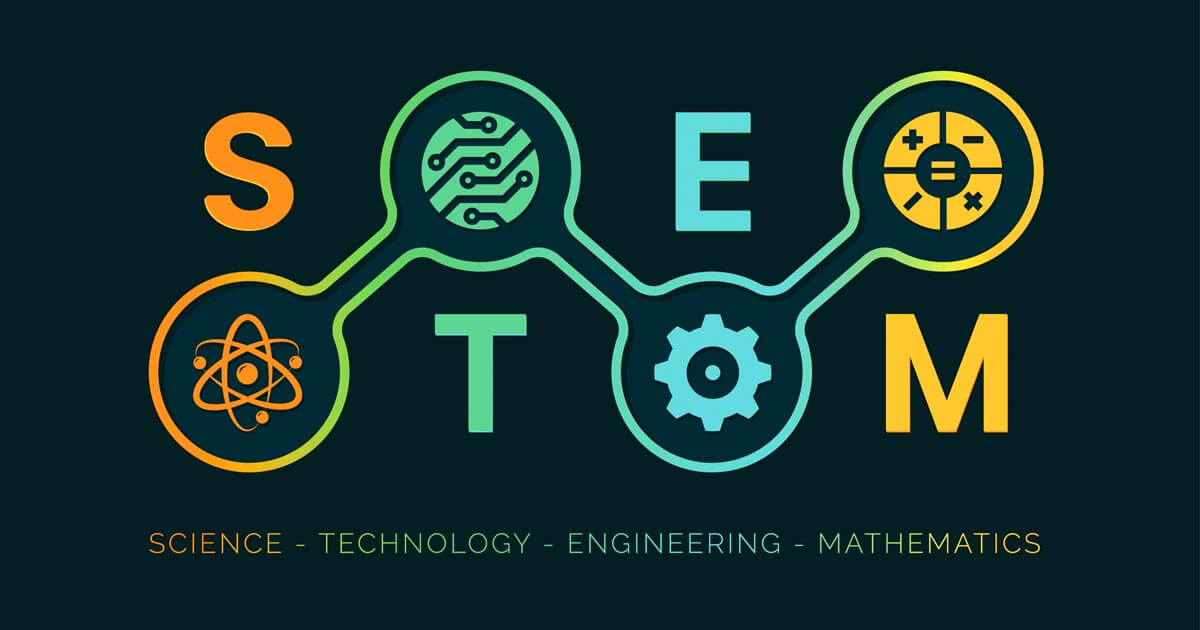Breaking Down BIA: STEM Education
Our best and brightest hold positions in these difficult, specific, and knowledge-intensive occupations. If we are to see similar groundbreaking innovations as in the Cold War, one of the best investments we can make is in the young minds of the next generation.

STEM: Science, technology, engineering, and mathematics. The building blocks for innovation and a large contributor to growth in a healthy market. During the Cold War, investments in STEM fields allowed for technological developments that forever changed our world. Inventions we still use today; like the internet, GPS, and computer chips. Our best and brightest hold positions in these difficult, specific, and knowledge-intensive occupations. If we are to see similar groundbreaking innovations as in the Cold War, one of the best investments we can make is in the young minds of the next generation.
FUNDING STEM EDUCATION
The Bipartisan Innovation Act (BIA) will help children, parents, and families to excel at any age and lead a safe, flourishing home life. The House’s version of the bill, the America COMPETES Act, would work to develop pre-kindergarten STEM educational programs. Starting as early as preschool, programs would generate interest from the beginning of a child’s academic career. Thus allowing for more organic integration into harder STEM concepts later in life. The BIA includes provisions funding better STEM education in high school programs, with a focus on rural areas and their unique needs. The bill also provides undergraduate scholarships, graduate fellowships, and post-doctoral awards to strengthen our workforce with the tools necessary to succeed at each step of their journey.
These subjects are not naturally inviting, anyone who’s taken a physics course, or an algebra class will tell you as much. They require patience, well-paid and talented teachers, and gradual learning in a child’s earliest stages when their minds are most impressionable. If we can begin to make these subjects accessible, inviting, or even desirable for our country’s youth, then we stand a chance to stay ahead in this global technology race. As it stands, our education system is struggling to keep up with that of our competitors.
WHAT WE’RE UP AGAINST
India and China are two countries that have prioritized STEM in their education system. Both are seeing greater numbers of doctorates coming out of their institutions. Back in 2017, the World Economic Forum released a report showing that the U.S.produced only 568,000 Ph.D. graduates that year in comparison with 4.7 million Ph. Ds from Chinese schools or 2.6 million Ph. Ds in Indian schools. This disparity has only widened over the last 20 years. In the U.S. we have gone from having twice as many graduating STEM doctorates as the Chinese to 32% less by 2019.
When Humanity Forward’s founder, Andrew Yang, ran for president in 2019, his campaign embraced the word “MATH” as his slogan. To distinguish him from his running mates. Yang firmly believed in using math, logic, and other STEM fields to inform our country’s policies and educate its citizens. That we live in an ever-changing world and we must adapt to keep up with the work in demand. The global market is requiring workers to think harder, as roles shift away from labor and into digital, data-driven ones. Not to say that manufacturing and infrastructure are not the backbones of America. Rather, when they are informed by innovative research we can make leaps and bounds as a country.
DEMAND IN THE JOB MARKET
Look no further than China. A country setting new productivity standards and seeing more economic growth than any other nation. China also has shown immense support for STEM in recent years. In a report from the Center for Security and Emerging Technology (CSET) at Georgetown University, data shows that China’s Ph.D. graduates have increased by 34% between 2015 and 2019. CSET’s projections now estimate that by the year 2025, China will have twice as many graduates as we do.
In the U.S. our supply of STEM professionals cannot keep up with demand. Since 2016 there has been an average of three million unfilled tech jobs in our country. That number has gone up to almost four million as of 2021. Four million well-paying and impactful careers that our workforce cannot fill.
The Bipartisan Innovation Act will help prepare our workforce for the growing demand of STEM fields. By funding our education system. It even proposes a separate provision to fill our current demand for STEM workers. Section 80303 of the COMPETES Act would institute a pipeline for immigrants with advanced doctorates. To earn them residency, fill this labor gap, and stimulate our economy. Meanwhile, we can educate the next generation.